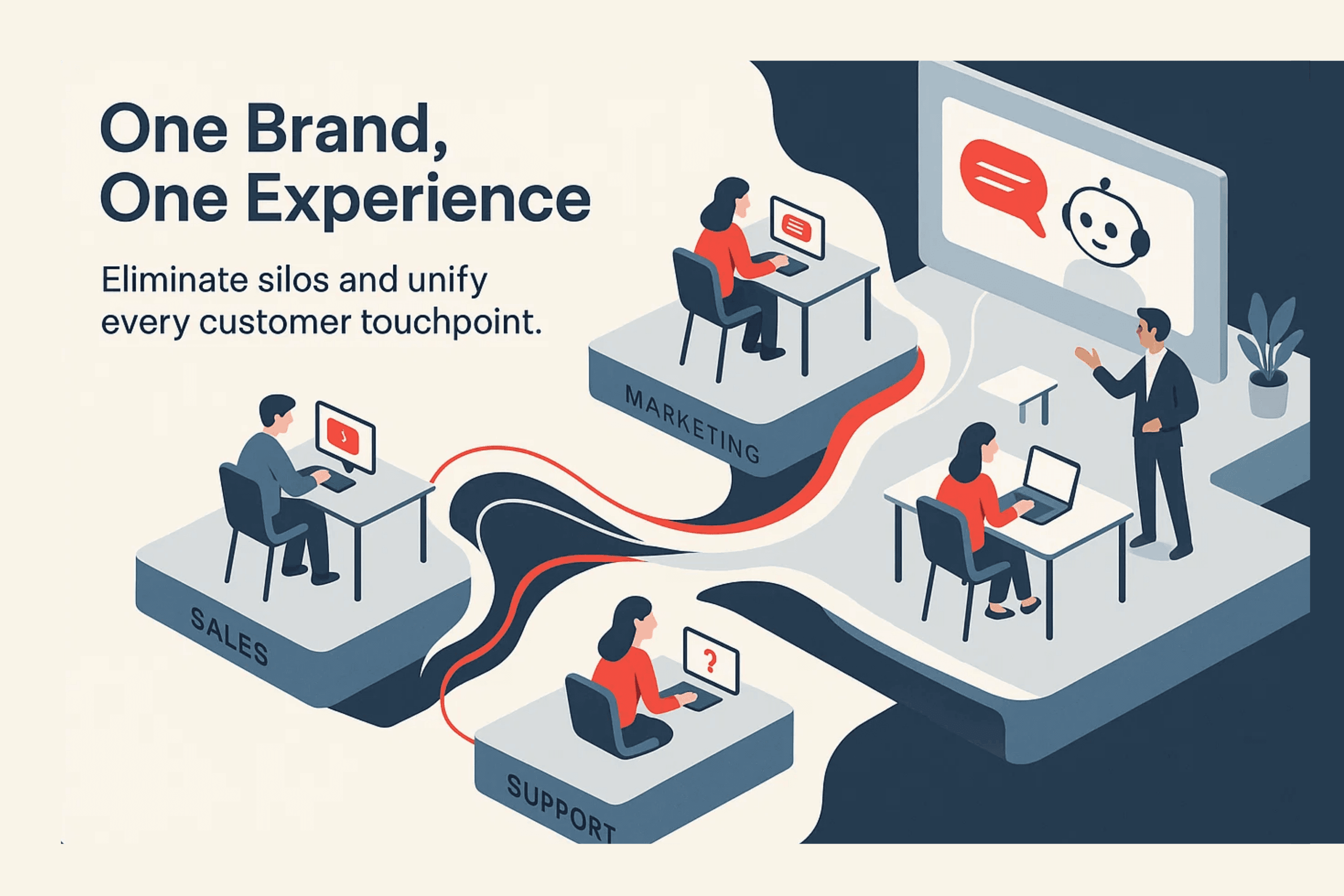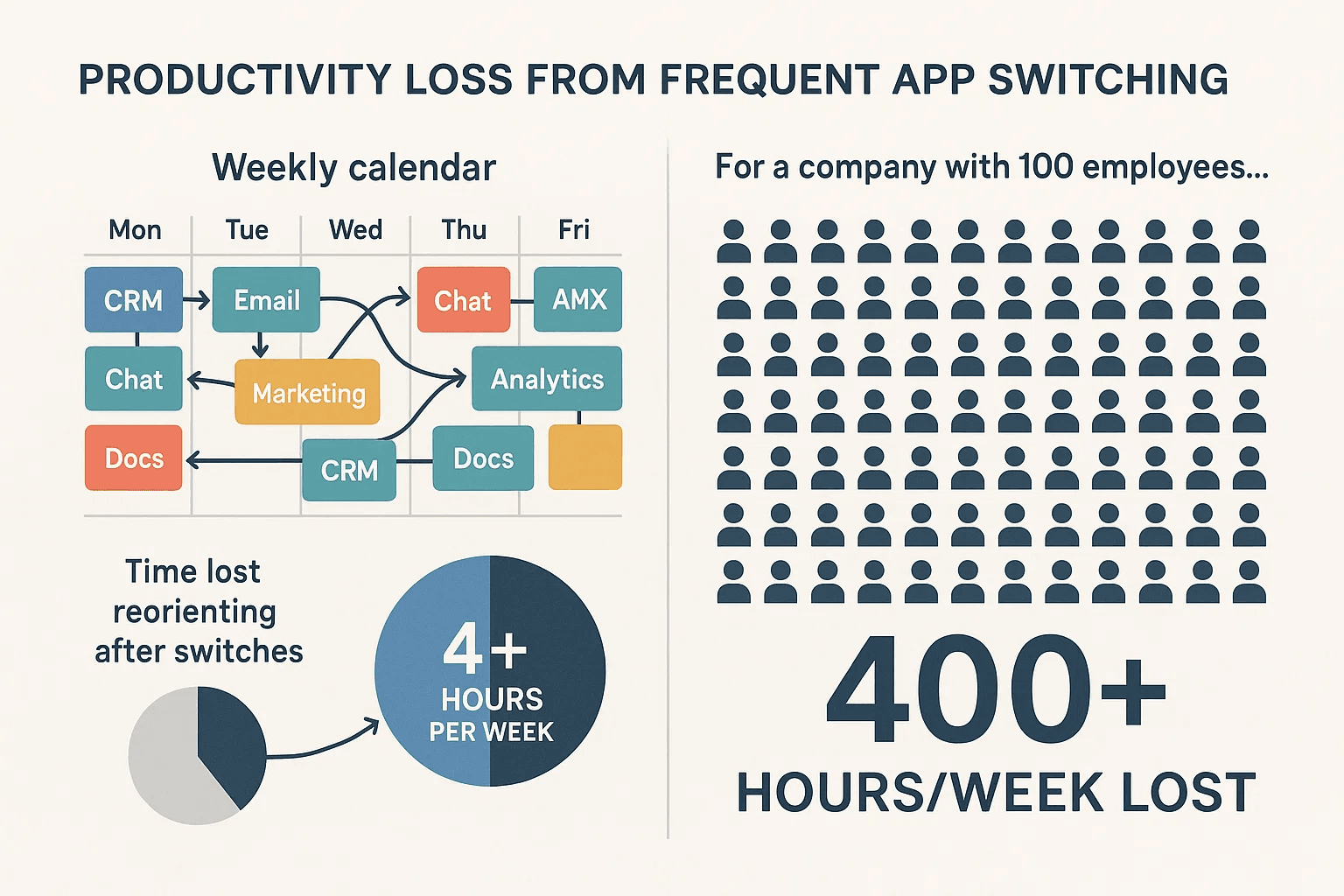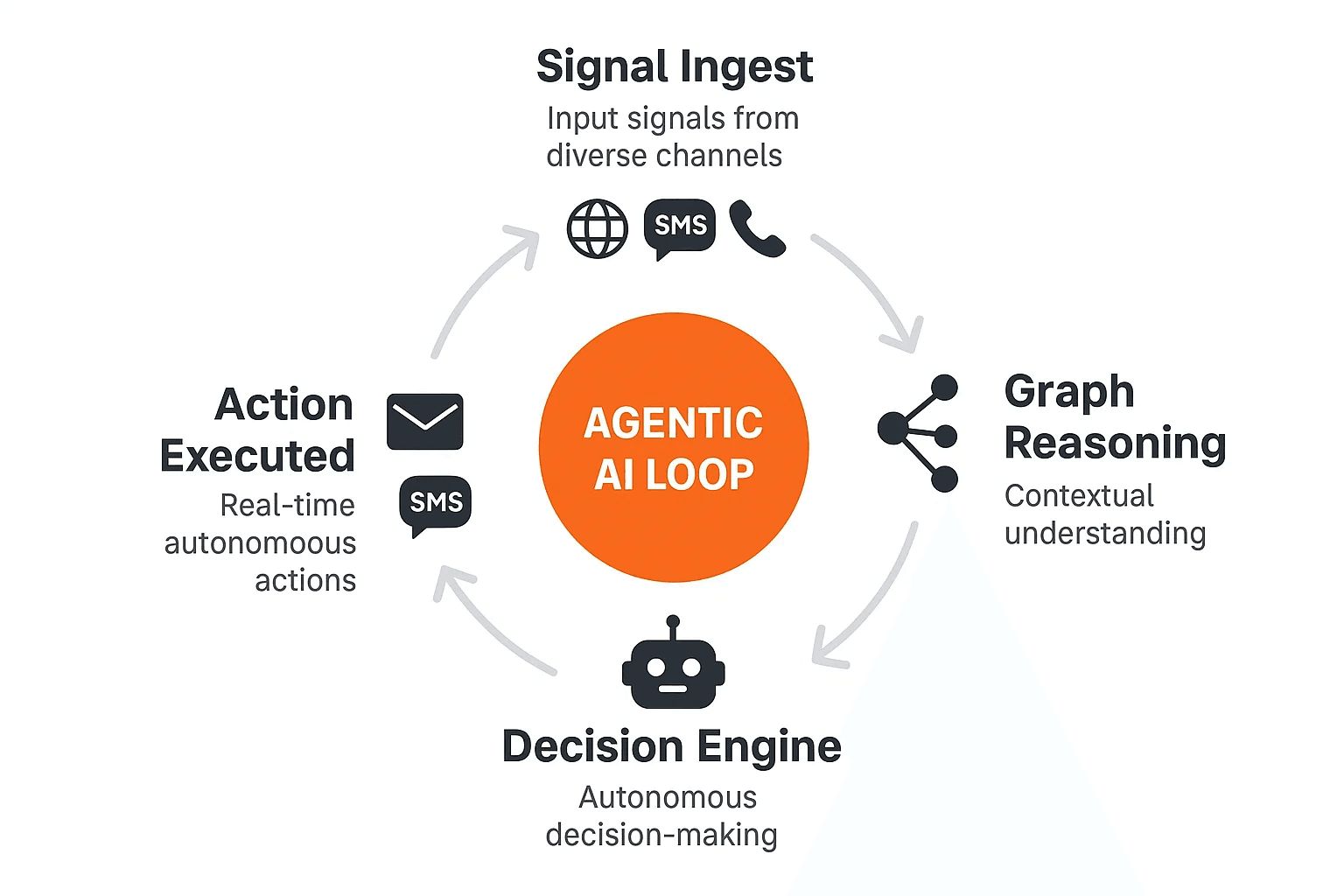One Brand, One Voice: Solving Fragmentation Across Marketing, Sales, and Support

For most of the past fifteen years, SaaS wisdom sounded like a commandment: pick a microscopic pain point, solve it better than anyone else, and buyers will gladly stitch your tool into their stack. The strategy worked. Each new “best-of-breed” app chipped away at some narrow chore—A/B testing this, webinar hosting that, sentiment scoring the other. Venture decks celebrated focus. Marketers loved the promise of “best in class.” The result, however, was an explosion of point solutions that few teams can now wrangle. Chief Martec’s 2024 supergraphic lists 14,106 marketing products—up 27.8 % year-over-year. The average company runs 371 SaaS apps today; enterprises juggle 473 apps on average. What started as specialization has turned into fragmentation.
Hidden Productivity Costs of Fragmentation
When every workflow lives in its own tab, people spend as much time navigating tools as they do creating value.
A Harvard Business Review study found that knowledge workers lose almost four hours every week simply reorienting themselves after switching between applications. Multiply that by dozens of employees, and the hidden cost dwarfs many subscription fees. Data suffers too. Each micro-app owns its own schema, API limits, and export quirks, leaving revenue leaders squinting at dashboards that never quite align. A BetterCloud survey reports that 48 % of “shadow IT” arose from teams plugging data gaps themselves. The narrower the tools, the wider the cracks.

Fragmented Customer Experiences
Point solutions also fracture the customer experience. One platform emails promotions, another texts reminders, and a third runs chat pop-ups. None share real-time context, so a customer who just solved an issue in chat still receives a “Need help?” email minutes later. Worse, advanced use cases—predictive journeys, real-time personalization, closed-loop attribution—depend on stitching those silos together. IT queues fill up with integration requests, while ops teams bounce CSV files between systems. In Productiv’s 2025 SaaS census, 62 % of IT leaders named “integrations” their top headache.
The Ultimate Limits of Integration Glue
Until recently, the industry’s answer was “more glue.” iPaaS connectors, ETL pipelines, and reverse-ETL warehouses promised to reconcile the sprawl. They succeed to a point, but each layer adds latency, maintenance, and yet another vendor line item. Consolidation fatigue is why 2024’s State of SaaSOps called tool portfolio reduction “the new IT mantra” . Forward-looking teams are asking a different question: What if consolidation isn’t just about cost, but about enabling an entirely new operational model?
Agentic AI: A Unified Engine
Enter Agentic AI. Large language models and autonomous agents thrive on broad context. They reason across channels, detect patterns in natural language, and drive decisions without hard-coded rules—but only if they can see the whole board. Feed an agent partial data, and it hallucinates; feed it unified signals, and it orchestrates. That requirement flips the old SaaS mantra on its head. Narrow point solutions are not just inefficient; they actively undercut AI’s potential.
Architecture of Horizontally Unified Platforms
Horizontally unified platforms solve this by design. They collect inbound and outbound interactions—web, social, voice, email, SMS—into a single “conversation graph,” enriched with events from commerce, CRM, and support. Because the data lives side by side, an agent spotting a frustrated tone in chat can adjust a nurture email moments later, or suppress an outbound call sequence entirely. Marketers regain the coherent customer view they lost to specialization, yet keep the flexibility to launch new channels fast because they talk to one core system instead of eight.

Performance Gains from Unified Agentic Platforms
The performance gains are real. In pilots across retail and automotive brands, unified Agentic platforms cut human qualification time by 90 % and lifted conversion on multi-channel lead flows by 25–30 % compared with stitched stacks (internal benchmark, 2025). They also simplify compliance: rather than run separate GDPR or HIPAA audits for each tool, companies validate one data boundary and inherit certifications like SOC 2 for free.
Balancing Breadth with Modularity
Skeptics worry that monolithic platforms revive the old suite model—slow, closed, and expensive. Unified does not have to mean rigid. Modern horizontal systems expose open APIs, let teams slot in specialized services where it still makes sense, and meter pricing on usage instead of seats, so cost scales with value delivered. Gartner’s 2024 CX forecast notes that “composable, AI-ready platforms will power 60 % of new customer-experience technology selections by 2026”. In other words, breadth matters again, but only if it comes with modularity.
The Evolving Role of Point Solutions
Where does that leave current point solutions? Many will persist as feature layers atop broader canvases, much like mobile apps co-exist within smartphone OSs. The strategic gravity, however, shifts toward the platforms that hold the data and host the agents. SaaS vendors that remain narrow may still carve profitable niches, but they risk being background utilities rather than strategic hubs.
A New Framework for Buying SaaS Platforms
For buyers, the decision framework is changing. Instead of asking “Which dedicated tool is best at X?” teams now ask “Which platform lets agents automate X, Y, and Z without losing context?” Procurement scorecards move from feature checklists to data-fabric questions: Does the product capture unstructured and structured signals together? Does it expose that context to AI in real time? Can business users orchestrate journeys without running an integration sprint first?
The Road to Unified, Intelligent Engagement
The transition won’t happen overnight. Teams will still phase out tools gradually, and some vertical champions will evolve into horizontal suites themselves. Yet the direction is clear. Software built for clicks cannot thrive in a world ruled by conversations. Agentic AI elevates integration from convenience to necessity; without a unified substrate, autonomy stalls.
Fifteen years ago, success meant knowing a single sliver of the workflow better than anyone else. Today, success means knowing the customer end-to-end, because that’s what your AI needs in order to act. Horizontally unified platforms are not a nostalgic return to bulky suites; they’re the prerequisite for intelligent, real-time engagement. The next wave of SaaS will be won not by those who slice the stack thinner, but by those who make the stack disappear. And that, finally, will let companies stop plumbing and start performing.
